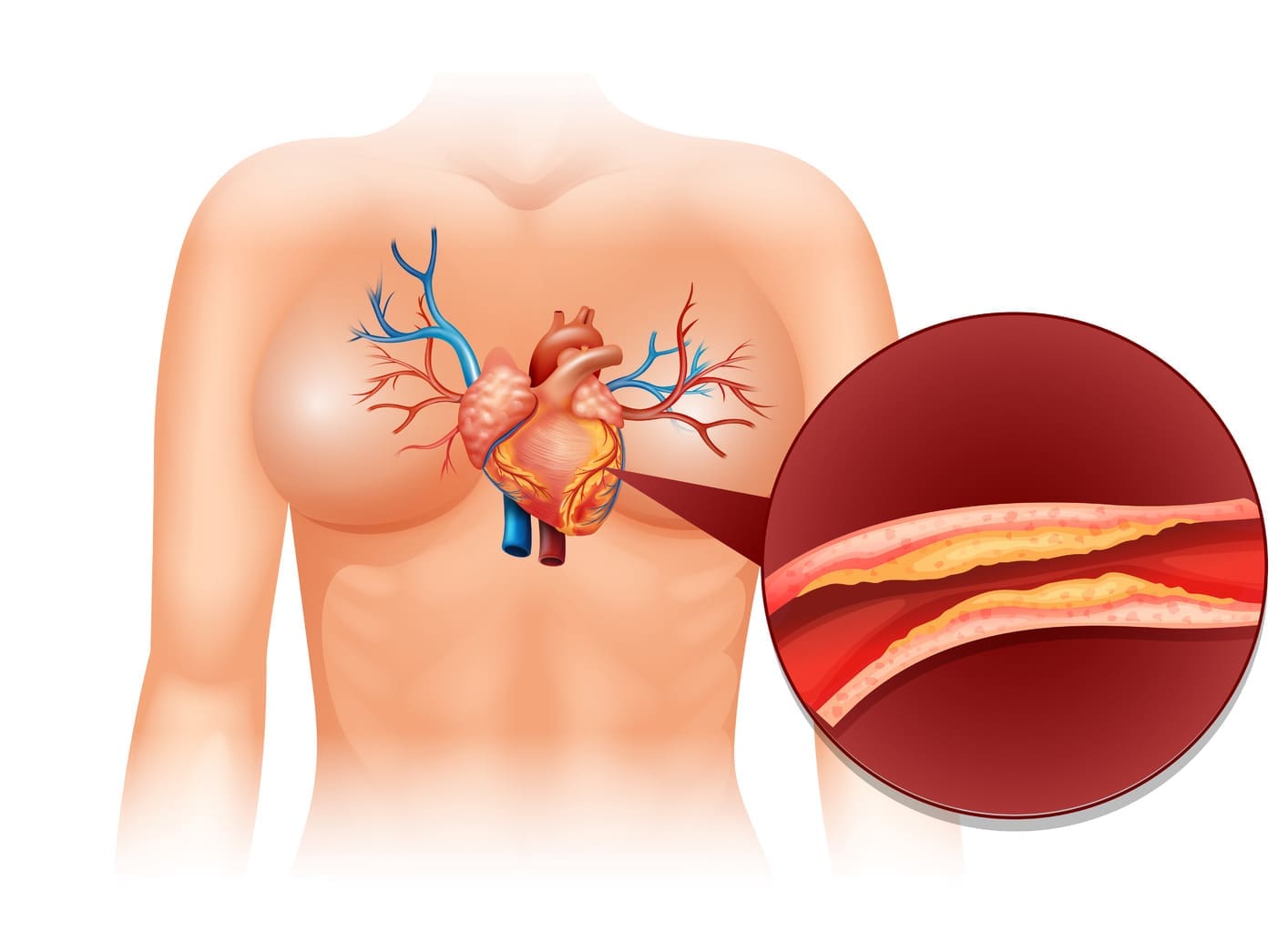Last Updated on November 26, 2025 by Bilal Hasdemir

Autoimmune diseases affect about 8% of the US population. They range from common to rare conditions. These diseases can lead to chronic symptoms or fatal complications.
We know how serious these diseases are. Giant cell myocarditis, vasculitis, systemic lupus erythematosus (SLE), multiple sclerosis (MS), and type 1 diabetes are among the deadliest. They can cause organ failure and life-threatening outcomes.
At Liv Hospital, we offer advanced care for international patients. We provide healthcare services tailored to the risks and challenges of severe autoimmune conditions. Our team works together to support patients in managing their conditions effectively.
Key Takeaways
- Autoimmune diseases can lead to severe and life-threatening conditions.
- The top 5 worst autoimmune diseases include giant cell myocarditis, vasculitis, SLE, MS, and type 1 diabetes.
- Liv Hospital offers specialized care for international patients with these conditions.
- Early intervention is key in managing fatal autoimmune diseases.
- Comprehensive healthcare services are available for patients with severe autoimmune conditions.
Understanding Autoimmune Diseases and Their Impact
The immune system fails to tell self from non-self, leading to autoimmune diseases. These conditions happen when the body attacks its own cells, tissues, and organs. This can cause a variety of health problems, like rheumatoid arthritis and lupus.
Attack on the Body
Autoimmune diseases can harm different parts of the body. For example, rheumatoid arthritis attacks the joints, causing pain and swelling. Lupus can harm organs like the skin, kidneys, and heart. This can lead to chronic pain, disability, and even death.
Prevalence and Demographics
Autoimmune diseases affect a lot of people. About 8% of Americans have them. Women are more likely to get these diseases than men, and they can happen at any age.
General Risk Factors
Several things can make you more likely to get autoimmune diseases. These include genetics, environmental triggers, and hormones. For example, some chemicals or infections can start an autoimmune response. Ongoing research, like studies on Argenx’s treatment, aims to find new ways to treat these diseases.
How Autoimmune Diseases Can Become Fatal
Autoimmune diseases can be deadly because they can damage organs beyond repair. We’ll look at how these diseases can lead to fatal outcomes. This includes the damage they cause to organs, the death rates, and how age and gender affect these rates.
Mechanisms of Organ Damage
Autoimmune diseases can harm organs in several ways. Chronic inflammation is a key feature of many of these diseases. It causes ongoing damage to tissues and organs. For example, in autoimmune hepatitis, the immune system attacks liver cells, which can lead to cirrhosis and liver failure if not treated.
Mortality Statistics
The death rates for autoimmune diseases vary a lot. Some diseases, like giant cell myocarditis, have very high death rates because they cause heart failure quickly. Early diagnosis and treatment are key to improving survival chances.
“The key to managing fatal autoimmune diseases is early detection and aggressive treatment to prevent irreversible organ damage.”
Age and Gender Factors in Fatality
Age and gender play big roles in how deadly autoimmune diseases are. Some diseases, like systemic lupus erythematosus (SLE), hit women harder. Others might be more deadly in older adults because of other health issues and weaker immune systems. Knowing these factors helps doctors tailor treatments better.
What Are the Top 5 Worst Autoimmune Diseases?
There are five autoimmune diseases that are very serious. They have high death rates and greatly affect patients. These diseases are not just hard to live with but can be life-threatening if not treated right.
Criteria for Severity Ranking
We look at several things to rank autoimmune diseases by how bad they are. We check death rates, organ damage risk, and how much they hurt a patient’s life quality. This helps us know which diseases are the most dangerous and need quick medical help.
We use a lot of data and research to rank these diseases. We focus on the ones that cause the most harm. This can be through direct damage to organs or through other problems.
Overview of the Deadliest Autoimmune Conditions
The top 5 worst autoimmune diseases are giant cell myocarditis, vasculitis (like Granulomatosis with Polyangiitis), Systemic Lupus Erythematosus (SLE), Multiple Sclerosis (MS), and Type 1 Diabetes. These diseases can badly damage organs and have high death rates if not treated well and fast.
- Giant Cell Myocarditis: A rare but deadly condition that inflames the heart muscle.
- Granulomatosis with Polyangiitis (Wegener’s): A vasculitis that harms blood vessels and can damage organs.
- Systemic Lupus Erythematosus (SLE): A disease that attacks many organs and can cause a lot of damage.
- Multiple Sclerosis (MS): A chronic disease that harms the central nervous system, leading to worsening neurological problems.
- Type 1 Diabetes: An autoimmune disease that destroys insulin-making cells in the pancreas, making it hard to manage for life.
It’s important to know about these diseases to make better treatment plans. By understanding how serious and dangerous these diseases are, doctors can give better care to those affected.
Giant Cell Myocarditis: The Most Deadly Autoimmune Disease
Giant cell myocarditis is a rare but dangerous autoimmune disease. It can cause severe heart and even death. This condition leads to inflammation in the heart muscle, which can quickly turn into heart failure if not treated quickly.
Pathophysiology and Heart Damage Progression
Giant cell myocarditis is caused by an autoimmune response. This response inflames and destroys heart muscle cells. The heart muscle is replaced with giant cells and fibrosis, making it hard for the heart to work right.
The heart damage from giant cell myocarditis can happen fast. It often leads to severe heart failure in weeks or months. This fast decline shows why early diagnosis and treatment are so important.
Symptoms and Warning Signs
The symptoms of giant cell myocarditis can vary. They often include chest pain, shortness of breath, and palpitations. As it gets worse, patients might see signs of heart failure like edema and fatigue.
It’s key to catch these symptoms early. If you notice them, seek medical help right away. This is even more important if you have a history of autoimmune disorders.
Diagnosis Challenges
Diagnosing giant cell myocarditis is hard because it’s rare and symptoms can be similar to other heart conditions. A heart biopsy is usually needed to confirm the diagnosis. It shows the characteristic giant cells and damage to the heart muscle.
New imaging techniques, like MRI, help find this condition sooner. But, a biopsy is the best way to be sure.
Treatment Options and Survival Rates
Treatment for giant cell myocarditis includes immunosuppressive therapy to fight inflammation and prevent more damage. In serious cases, a heart transplant might be needed.
Thanks to better treatments, survival rates have gone up. But, the outlook is not good. We need more research and tailored treatments to help patients with this serious condition.
| Treatment Approach | Description | Survival Rate |
|---|---|---|
| Immunosuppressive Therapy | Reduces inflammation and immune response | 50% at 1 year |
| Heart Transplantation | Replacement of damaged heart with a donor heart | 70% at 5 years |
| Combination Therapy | Use of multiple immunosuppressive agents | 60% at 3 years |
Granulomatosis with Polyangiitis (Wegener’s): Severe Vasculitis
Granulomatosis with polyangiitis, once known as Wegener’s granulomatosis, is a rare autoimmune disorder. It causes inflammation in the blood vessels, known as vasculitis. This can lead to damage and failure of organs if not treated.
Impact on Blood Vessels and Organs
This condition mainly affects the blood vessels, causing vasculitis. The inflammation can damage organs like the kidneys, lungs, and upper respiratory tract. It can lead to serious issues such as kidney failure, lung bleeding, and damage to the nasal passages.
Key areas affected by granulomatosis with polyangiitis include:
- Kidneys: Leading to kidney failure
- Lungs: Causing coughing and breathing problems
- Upper respiratory tract: Causing nasal ulcers and sinusitis
Recognizing the Symptoms
Symptoms of granulomatosis with polyangiitis vary but often include:
- Persistent cough and breathing issues
- Nasal ulcers and sinusitis
- Kidney problems, including blood in urine
- General symptoms like fever, fatigue, and weight loss
It’s important to recognize these symptoms early for timely treatment.
Diagnostic Approaches
Diagnosing granulomatosis with polyangiitis requires clinical evaluation, lab tests, and imaging. Key tools include:
- Blood tests for ANCA (Anti-Neutrophil Cytoplasmic Antibodies)
- Tissue biopsy to confirm vasculitis
- CT scans to check for organ damage
Accurate and quick diagnosis is key for starting treatment.
Treatment Protocols and Prognosis
Treatment for granulomatosis with polyangiitis involves immunosuppressive drugs. These drugs reduce inflammation and prevent organ damage. Treatment may include:
- Corticosteroids to control inflammation
- Immunosuppressive drugs to stop the immune system’s attack
- Biologic agents targeting the immune response
Thanks to modern treatments, the outlook for patients has greatly improved. Yet, ongoing care is needed to prevent relapses and manage complications.
Systemic Lupus Erythematosus (SLE): Multi-Organ Threat
Systemic Lupus Erythematosus (SLE) is a disease that affects many parts of the body. It is a chronic autoimmune condition. This means the body’s immune system attacks healthy tissues, causing damage.
SLE can harm the skin, joints, kidneys, and brain. It’s a challenge to diagnose and treat because of this.
The Widespread Impact of Lupus
SLE affects people differently. This makes it hard to diagnose and manage. The disease causes inflammation and damage in various parts of the body.
This leads to a wide range of symptoms. SLE not only affects physical health but also mental well-being. It impacts patients’ quality of life.
Critical Symptoms and Flares
SLE has periods of flares and remission. During flares, symptoms get worse. New symptoms may appear too.
Critical symptoms to watch for include:
- Kidney problems, which can lead to nephritis
- Neurological issues, such as seizures or psychosis
- Cardiovascular complications
Diagnostic Methods
Diagnosing SLE is challenging. Symptoms can mimic other diseases. We use a combination of clinical evaluation, medical history, and laboratory tests to diagnose SLE.
| Diagnostic Criteria | Description |
|---|---|
| Clinical Symptoms | Presence of symptoms such as joint pain, skin rashes, and kidney issues |
| Immunological Tests | Presence of specific antibodies, such as ANA and anti-dsDNA |
| Laboratory Tests | Blood tests to assess organ damage and inflammation |
Managing Lupus and Preventing Complications
Managing SLE requires a multi-faceted approach. This includes medication, lifestyle changes, and regular monitoring. We work with patients to develop personalized treatment plans.
Effective management strategies include:
- Medications to reduce inflammation and suppress the immune system
- Lifestyle adjustments, such as avoiding sun exposure and maintaining a healthy diet
- Regular follow-ups with healthcare providers to monitor disease activity
Multiple Sclerosis (MS): Progressive Neurological Deterioration
When Multiple Sclerosis (MS) attacks, it targets the central nervous system. This leads to a series of neurological problems. MS is a chronic autoimmune disease that harms the brain and spinal cord, causing long-term damage to neurological function.
Nervous System Damage Mechanisms
In MS, the immune system mistakenly attacks the protective covering (myelin sheath) of nerve fibers. This disrupts communication between the brain and the rest of the body. The damage can cause a variety of symptoms, from vision issues to muscle weakness and coordination problems.
The progression of MS varies greatly among individuals. Some may have mild symptoms, while others face severe disability. Understanding how this damage occurs is key to finding effective treatments.
Symptom Progression and Types
MS symptoms can be unpredictable and vary widely from person to person. Common symptoms include:
- Vision problems, such as blurred vision or loss of vision
- Muscle weakness or spasms
- Difficulty with coordination and balance
- Cognitive difficulties, such as problems with memory or concentration
There are four main types of MS: relapsing-remitting MS, secondary progressive MS, primary progressive MS, and progressive-relapsing MS. Each type has its own pattern of progression and symptoms.
Diagnostic Techniques
Diagnosing MS can be challenging due to its similarity to other neurological conditions. We use a combination of medical history, neurological exams, and diagnostic tests like MRI scans to confirm the presence of MS.
MRI scans are very useful, as they can show lesions on the brain and spinal cord typical of MS. Other tests, such as evoked potentials and optical coherence tomography, may also be used to assess nerve damage.
Treatment Approaches and Life Expectancy
While there is no cure for MS, various treatments can help manage symptoms, slow disease progression, and improve quality of life. Disease-modifying therapies (DMTs) are a key part of MS treatment, aiming to reduce the frequency and severity of relapses.
We also focus on symptom management through medications, physical therapy, and lifestyle adjustments. With proper care, many people with MS can lead active and fulfilling lives. Research continues to advance, bringing hope for better treatments and outcomes.
Life expectancy for individuals with MS has improved significantly with advancements in medical care. While MS can impact life quality, most people with the condition have a near-normal life expectancy.
Type 1 Diabetes: Long-term Fatal Complications
Type 1 diabetes is an autoimmune disease. It makes the immune system attack the pancreas. This disrupts insulin production and leads to severe health issues.
Destruction of Pancreatic Beta Cells and Insulin Deficiency
The immune system attacks the beta cells in the pancreas in type 1 diabetes. This attack reduces insulin production. People with type 1 diabetes need insulin for life.
Insulin deficiency is a key feature of type 1 diabetes. If not managed well, it can cause serious problems.
Acute and Chronic Complications
Type 1 diabetes can cause both sudden and long-term problems. Sudden issues include diabetic ketoacidosis, a dangerous condition with high ketone levels. Long-term problems damage organs like the heart, kidneys, and eyes.
Chronic complications include:
- Cardiovascular disease
- Nephropathy (kidney damage)
- Retinopathy (eye damage)
- Neuropathy (nerve damage)
Diagnostic Criteria
To diagnose type 1 diabetes, doctors use clinical checks, lab tests, and sometimes genetic tests. They look for autoantibodies against pancreatic islet cells, insulin deficiency, and high blood sugar.
Management Strategies and Mortality Risk
Managing type 1 diabetes involves insulin, blood sugar checks, and lifestyle changes. Despite better care, it’s a serious disease with a high risk of death. Proper care and monitoring can lower this risk.
It’s vital to provide full care for those with type 1 diabetes. Understanding the disease and using effective treatments can improve their lives and life expectancy.
Rare But Fatal Autoimmune Diseases
Rare autoimmune diseases are dangerous and can be more severe than common ones. They cause severe inflammation and damage to organs like the kidneys and liver. We’ll look at Goodpasture’s Syndrome, Autoimmune Hepatitis, and Dermatomyositis with Interstitial Lung Disease.
Goodpasture’s Syndrome
Goodpasture’s Syndrome is a rare disease that affects the kidneys and lungs. It happens when the immune system attacks these organs, causing bleeding and kidney failure. Symptoms include coughing up blood, feeling tired, and swelling in the legs. If not treated, it can be deadly.
Diagnosis Challenges: Finding Goodpasture’s Syndrome can be hard because its symptoms are similar to other diseases. Doctors use tests and imaging to find specific antibodies.
Treatment Options: Treatment involves removing harmful antibodies from the blood through plasmapheresis. Doctors also use medications to calm the immune system.
Autoimmune Hepatitis
Autoimmune Hepatitis makes the liver inflamed, which can lead to cirrhosis or liver failure. Symptoms include feeling tired, jaundice, and pain in the abdomen. The exact cause is not known, but it’s thought to be genetic and environmental.
Managing the Condition: Treatment includes corticosteroids to reduce inflammation. Sometimes, other drugs are used. It’s important to monitor the treatment to avoid side effects.
Dermatomyositis with Interstitial Lung Disease
Dermatomyositis is an inflammatory disease that causes skin rash and muscle weakness. When it’s complicated by Interstitial Lung Disease (ILD), it becomes very dangerous. ILD scars the lung tissue, making it hard to breathe and can lead to respiratory failure.
Comprehensive Care: Treatment involves a team of doctors, including rheumatologists, pulmonologists, and dermatologists. They use corticosteroids and other drugs to reduce inflammation. They also focus on supporting lung function.
In conclusion, though rare, these autoimmune diseases can be fatal if not treated right. It’s important for doctors and patients to know about these conditions to get the right care.
Diagnostic Challenges in Deadly Autoimmune Conditions
Deadly autoimmune conditions are hard to spot because they show many different symptoms. It’s tough to find them early because their signs can look like other diseases. This makes it key to figure out the difference.
Why Some Autoimmune Diseases Are Hard to Diagnose
Some autoimmune diseases are tricky to diagnose because their symptoms are not clear. For example, Giant Cell Myocarditis and Granulomatosis with Polyangiitis (Wegener’s) can be mistaken for milder diseases. This delay can harm patients.
Nonspecific symptoms and variable disease presentations make early diagnosis hard. These diseases can affect many parts of the body, causing a wide range of symptoms. This can confuse both patients and doctors.
Advanced Diagnostic Techniques
New ways to diagnose autoimmune diseases have made it more accurate. Tools like high-resolution imaging, genetic testing, and serological tests for specific autoantibodies help pinpoint these conditions better.
- Imaging techniques like MRI and CT scans show organ damage.
- Genetic testing finds risks for certain autoimmune diseases.
- Serological tests find specific autoantibodies linked to certain conditions.
The Importance of Early Detection
Finding autoimmune diseases early is key for better treatment and outcomes. Early diagnosis means starting treatment sooner. This can stop serious damage and save lives.
Early intervention can change the disease’s course. It lowers the risk of serious problems and improves life quality. We stress the need for doctors to know the early signs of these diseases.
Conclusion: Advances in Treatment and Hope for the Future
Exploring the top 5 worst autoimmune diseases shows their serious risks. But, new treatments and research bring hope for better care. This is good news for those with these diseases and their healthcare teams.
At Liv Hospital, we use the latest medical knowledge to help international patients. Our team works hard to give top-notch care and support. We’re excited about the future of treating autoimmune diseases, thanks to ongoing research.
Medical innovation and teamwork are making big strides in fighting autoimmune diseases. We’re committed to bringing the latest treatments and care to those who need it most.
FAQ
What is the deadliest autoimmune disease?
Giant cell myocarditis is one of the deadliest autoimmune diseases. It progresses quickly and can be fatal if not treated.
What are the top 5 worst autoimmune diseases?
The top 5 worst autoimmune diseases are giant cell myocarditis, granulomatosis with polyangiitis, systemic lupus erythematosus, multiple sclerosis, and type 1 diabetes. These diseases can cause a lot of harm and even death if not managed well.
Can you die from autoimmune disease?
Yes, some autoimmune diseases can be fatal if not treated. Conditions like giant cell myocarditis and granulomatosis with polyangiitis can quickly lead to death.
Are autoimmune diseases fatal?
Some autoimmune diseases can be fatal, while others can be managed. The risk of death depends on the disease, its severity, and treatment success.
What are the worst autoimmune diseases?
The worst autoimmune diseases cause a lot of damage, pain, and disability. Examples include giant cell myocarditis, granulomatosis with polyangiitis, systemic lupus erythematosus, multiple sclerosis, and type 1 diabetes.
What is the hardest autoimmune disease to diagnose?
Diseases like systemic lupus erythematosus and multiple sclerosis are hard to diagnose. Their symptoms can be complex and similar to other conditions.
Do autoimmune diseases kill you?
While some autoimmune diseases can be fatal, many can be managed. Patients can live active lives with treatment. But, if untreated, some diseases can lead to serious complications.
What are rare autoimmune diseases that are fatal?
Rare but fatal autoimmune diseases include Goodpasture’s syndrome, autoimmune hepatitis, and dermatomyositis with interstitial lung disease. They need quick diagnosis and treatment to avoid serious outcomes.
Can you die from an autoimmune disease?
Yes, if an autoimmune disease is not managed properly or if treatment is delayed, it can be fatal. Regular medical care and following treatment plans are key.
Is autoimmune disease deadly?
Autoimmune diseases can be deadly if not treated correctly. The risk of death varies based on the disease and individual circumstances.
Can autoimmune diseases be life-threatening?
Yes, some autoimmune diseases can be life-threatening if not managed well. Conditions like giant cell myocarditis and granulomatosis with polyangiitis need quick and effective treatment.
References
National Center for Biotechnology Information (PMC). More women with most common autoimmune diseases die from cardiovascular disease than men: A study. https://pmc.ncbi.nlm.nih.gov/articles/PMC7937014/








